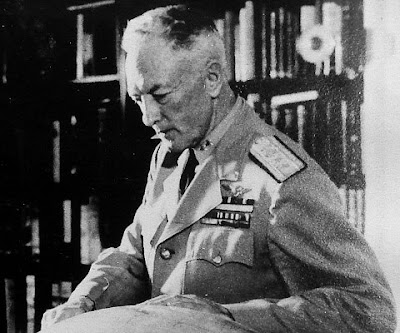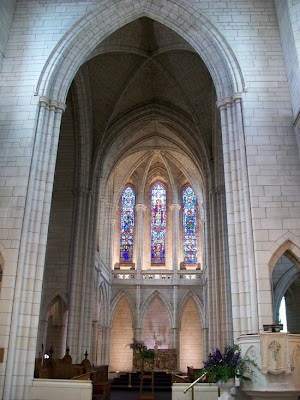A friend of mine showed me her copy purchased at a book sale recently, and I thought at the time, "Cool!". A field guide to Auckland, originally published in 1997 and redone in 2008 (the second edition is what I got my hands on -- but not on sale, dammit) is a tabbed area-by-area set of brief summaries covering the Auckland region as it says on the cover: "exploring the region's natural and historic heritage."
Because I'm in the process of piecing together stuff about
Henderson's Mill, I turned to page 188, where summary no. 70 tells us about the Henderson's Mill Heritage Trail.
At which point, my heart sank.
The author of the summary there makes the following points:
Reference to the "Dundee Sawmills" established by Thomas Henderson and John Macfarlane in 1849.
This isn't too bad. Some in-depth research would have pointed out to the author that the first sawmill there was more likely older that 1849, and that it wasn't called "Dundee Sawmill" until after 1855, when "Long" John McLeod and Cyrus Haskell leased and rebuilt the mill, even though yes, Thomas Henderson came from Dundee in Scotland. The date 1849 is one picked out of the box of possibilities by most commentators on the subject of Henderson's history, even myself up until recently. My current theory is that when researchers saw that John Macfarlane's will was dated 1849, that must have been when the mill was built because then there was something worth writing a will about. Perhaps -- but on examining John Macfarlane's probated will in the land records fromm 1860, it covered all the real estate owned by the partnership, including properties in the city, and even more likely the shipping fleet later dubbed the Circular Saw Line.
"Immediately above the dam site is the original mill manager's house restored in 1994 ..."
More contention, here. If you ask the West Auckland Historical Society about Mill Cottage (which is what the summary refers to), they will tell you it was the mill's cookhouse, not a "mill manager's house". Considering the building was relocated from slightly further back on the site (something not mentioned in the summary) and altered considerably over the years since the 1860s, the liklihood that it was originally a residential house instead of a utility building is in doubt.
"...Falls Park, the site of the relocated Falls Hotel (1856), constructed using kauri from the mill."
Here's the real howler. The Falls Hotel was completed in 1873, not 1856. As the sawmill ceased being a timber mill from around 1868 (it became a flax mill) and was abandoned altogether by about 1873-1875, it is extremely unlikely that the kauri in the building was cut in Henderson. Ben Copedo, West Auckland historian, thoroughly researched and published his findings on the story of the Falls Hotel in 1999. This was two years after the first edition of the field guide -- but nine years before the second edition. Copedo's findings are backed up by contemporary newspaper sources. Whereas the origin of Mill Cottage may be down to opinion, that of the Falls Hotel is not. The statement in the Field Guide is wrong.
I took a look at page 190, summary no. 72, to see what that said about the Pollen Island Marine Reserve. The piece steers clear of most of the history of the area before 1996 when the Motu Manawa Reserve was established, but one sentence about the shellbank which is Pollen Island: stands out:
"These vast depositsd of cockle shells were used for park pathways by ACC from the 1920s. For this a small tramway was built out to the north end of Pollen Island." Interesting statement, because it completely misses that fact of why Pollen Island is so-named (after
Daniel Pollen, who set up a brick and pottery yard on Rosebank close by from the late 1850s, and would have used the shellbank for lime for the works), and that up until 1927 Avondale was an independent borough, and from the period just before World War I until amalgamation owned the shellbank, using the shell there for lime and footpaths. Still, it is just a summary, I suppose ...
Page 203, summary No. 81 on Judges Bay ...
Referring to the Dove Meyer Robinson Park: "
The park contains many fine trees including an impressive pohutukawa planted by Robert Gillies c.1855 ..."
The only Robert Gillies I know of even remotely connected with the history of the park's site was a Dunedin surveyor (his son was
Harold Delf Gillies) married to Emily Street whose parents purchased part of the site in 1878 (
NZ Herald, 9 September 1878, p. 2). Emily herself joined her parents on an adjoining site after Robert's death in 1886. Who on earth is the author in the field guide talking about?
Ewen Cameron is described on the back of the book as curator of botany for Auckland Museum, and Bruce Hayward is a research geologist and marine eciologist. The historian of the team is Graeme Murdoch, best known for his work with the Auckland Regional Council and Te Kawerau o Maki. I've heard Murdoch speak, and he offered the best translation I've heard of the little-known Maori name for Traherne Island, Te Kou (the fish hook), but -- based on what I've read from just these two pages, the rest of the book's historical information is cast into doubt for me. I'd rate the book as a tertiary source at best, for starters, in terms of the historic content. The summaries, although unsourced in the main, appear to rely heavily on other works (which, as happens a lot with Auckland history, simply follow on and repeat from earlier works without additional primary research). The NZ Archaeology Association have included it on their list of
teacher resources as a "secondary source" which is a bit of a concern, as the information in the book, including the errors, could be repeated in classrooms without checking for accuracy.
It's even featured in
a list published by the
Sydney Morning Herald as "An excellent guide, virtually indispensable for anyone who wants to explore Auckland's natural and historic treasures."
It is a guide, yes. Excellent -- no, it isn't.










.jpg)







































